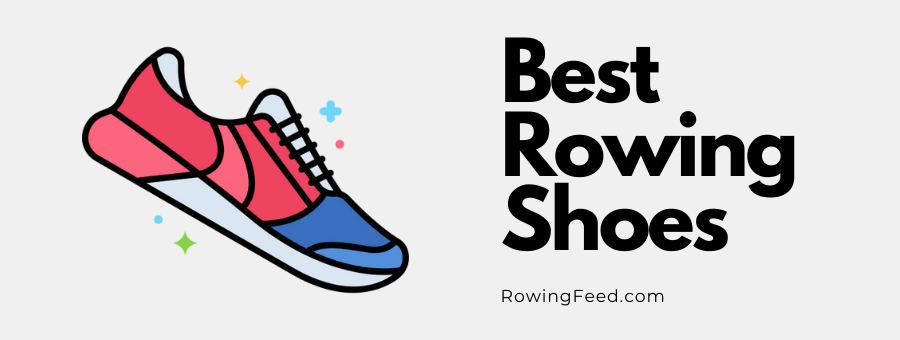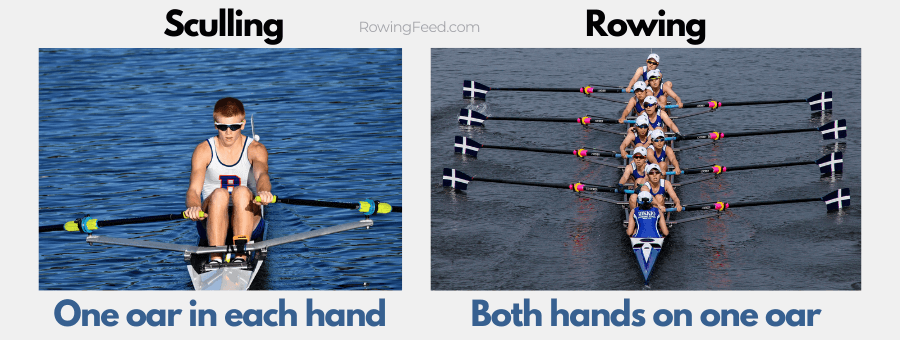Hey fellow rowers! If you’ve spent any serious time on an indoor rower, you know every detail counts – from your grip on the handle to how your feet connect with the footplates. After more than a decade pulling chains and logging countless meters on various ergs (mostly my trusty Concept2 RowErg), I’ve learned that the right shoes make a significant difference.
Slipping feet, uncomfortable pressure points, or shoes that feel like energy-sapping sponges – I’ve experienced it all. Choosing the wrong footwear can not only make your workout less comfortable but can actually hinder your performance and power transfer.
This guide isn’t just a list of popular shoes. It’s based on my years of experience testing different types of footwear during thousands of hours of steady-state rows, interval pieces, and intense sprints. My goal is to share what I’ve learned to help you find shoes that truly work for you on the machine.
Why Your Shoes Matter on the Erg
Unlike running, indoor rowing is a low-impact activity for your feet. You aren’t pounding pavement. Instead, you need:
- Maximum Power Transfer: According to research published in the Journal of Sports Sciences, your shoes are the connection point between your feet and the machine. You want a firm, stable base to push off from without energy loss.
- Stability: Your feet need to be securely held in place on the footplates, especially during the powerful drive phase and the quick transition at the catch.
- Comfort: Long sessions require shoes that don’t cause hotspots, cramping, or overheating.
As British Rowing’s technical guidelines emphasize, proper foot position and connection are fundamental to effective power application during the rowing stroke.
What Makes a Great Indoor Rowing Shoe: My Key Criteria
Forget flashy features designed for other sports. Based on my experience and aligned with Concept2’s rowing technique recommendations, here’s what truly matters for indoor rowing footwear:
1. A Flat, Firm, and Relatively Thin Sole
This is non-negotiable. Thick, cushioned soles (like many running shoes) compress during the leg drive, absorbing power that should be going into the machine. A flat, firm sole provides direct energy transfer and a better “feel” for the footplate. Minimal heel-to-toe drop (the height difference between the heel and forefoot) is ideal for maintaining a strong, stable foot position.
2. Good Grip
The outsole needs to grip the footplate securely, preventing any sliding during the drive or recovery. Most cross-training shoe outsoles work well here.
3. Secure Fit (Especially the Heel)
Your heel must not lift inside the shoe during the recovery or catch. Look for a shoe with good heel lockdown. The midfoot should also feel secure, but with enough room in the toe box for your toes to spread naturally during the drive.
4. Breathable Upper
Rowing workouts generate heat. A mesh or knit upper allows air to circulate, keeping your feet cooler and drier during long sessions. Durability against the foot straps rubbing is also a plus.
5. Lightweight Construction
Heavy, bulky shoes feel cumbersome. Lighter shoes contribute to a feeling of agility and connection with the machine.
6. Appropriate Flexibility
While you need a stable base, the forefoot should have enough flexibility to allow for a comfortable bend as you come into the catch.
What to Avoid in Rowing Footwear
Based on biomechanical principles supported by sports medicine research from PubMed, these are the types of footwear that can compromise your rowing efficiency:
- Thickly Cushioned Running Shoes: They absorb power and can feel unstable
- Shoes with a High Heel Drop: This can alter your foot angle uncomfortably
- Heavy, Bulky Boots or Casual Shoes: They lack the necessary performance features
These recommendations align with best practices from World Rowing Federation (FISA) and biomechanics research on optimal foot positioning and power transfer in rowing.
My Review Process & Affiliate Disclosure
The shoes reviewed below are models I have personally used extensively (or direct predecessors from the same line) during my own indoor rowing training. I evaluate them based on the criteria above, logging numerous sessions ranging from long steady-state pieces to high-intensity intervals, primarily on a Concept2 RowErg. My focus is solely on their performance for indoor rowing.
Transparency Note: To help support the time and effort put into creating content like this, some of the links below are affiliate links. This means if you click a link and make a purchase, I may receive a small commission at no extra cost to you. I only recommend products I genuinely believe are suitable based on my experience.
My Top Shoe Recommendations for Indoor Rowing (2025)
These selections are based on my personal testing and align with footwear principles supported by the American College of Sports Medicine for activities requiring stable foot positioning and direct power transfer.
1. Nike Metcon 9 (and predecessors)
The Metcon line has been a solid choice for years. The Metcon 9 continues this with a wide, flat, stable heel – excellent for that grounded feeling during the drive. Power transfer feels very direct. The updated upper is durable and holds up reasonably well against strap abrasion. Forefoot flexibility is decent for the catch.
My Experience:
I find the heel stability outstanding on the Metcon series. On hard sprint pieces, my feet feel locked in. The grip on standard Concept2 footplates is reliable. The breathability is good, though maybe not class-leading.
Potential Downsides for Rowing:
Some rowers might find the heel slightly more built-up than ideal, though it’s much flatter than a running shoe. The fit can be snug, so trying them on is recommended, especially if you have wider feet.
Verdict:
A top-tier, reliable all-around choice for serious rowers who value stability and direct power transfer. It’s popular for a reason.
Pros:
- ✔ Excellent heel stability
- ✔ Direct power transfer due to firm, flat sole
- ✔ Durable upper
- ✔ Good grip
Cons:
- ✘ Heel might feel slightly elevated for some purists
- ✘ Fit can be snug
2. Reebok Nano X4 (and predecessors)
Reebok Nanos are the Metcon’s classic rival. The Nano X4 offers a stable, relatively flat platform suitable for rowing. Its Flexweave upper is known for being both durable and breathable – a big plus for sweaty erg sessions. The sole provides good grip and ground feel.
My Experience:
I appreciate the balance the Nano series strikes. The X4 feels a bit more flexible in the forefoot than some Metcons, which I find comfortable coming into the catch. The breathability is excellent, noticeably better on long rows compared to some other trainers. Heel lockdown is secure.
Potential Downsides for Rowing:
Like the Metcon, it’s a cross-trainer first. While flat, the sole might have slightly more cushioning than a true minimalist shoe, but it’s minimal enough not to impede power transfer significantly. Some previous Nano versions had wider toe boxes; ensure the X4 fits your foot shape.
Verdict:
Another excellent, versatile option. Great breathability makes it a strong contender, especially for those who row in warmer environments or prefer slightly more forefoot flexibility than the Metcon.
Pros:
- ✔ Great breathability
- ✔ Stable platform
- ✔ Good forefoot flexibility
- ✔ Durable upper
Cons:
- ✘ Sole cushioning, while minimal, is slightly more than zero-drop shoes
3. WHITIN Barefoot / Minimalist Cross-Trainer
For rowers who love maximum connection and ground feel, a minimalist shoe like WHITIN is a great option. The zero-drop sole (heel and forefoot at the same height) and extreme flexibility allow your foot to move naturally. The wide toe box is fantastic, allowing toes to spread during the drive phase. They are incredibly lightweight.
My Experience:
Rowing in these feels very different – much closer to rowing barefoot but with protection and grip. The connection to the footplate is unparalleled. Power feels instantly transferred. The wide toe box significantly improves comfort for me during the drive.
Potential Downsides for Rowing:
Zero support. If you rely on shoe structure for stability or have foot issues, these might not be suitable. Durability can be lower than robust cross-trainers, especially where the straps rub. Takes time to adapt if you’re used to conventional shoes.
Verdict:
Excellent choice for experienced rowers seeking maximum footplate feel and natural foot mechanics. Not recommended for beginners or those needing arch/heel support. Be mindful of durability.
Pros:
- ✔ Unbeatable footplate connection and feel
- ✔ Wide toe box allows natural foot spread
- ✔ Zero-drop promotes good foot position
- ✔ Very lightweight
Cons:
- ✘ No cushioning or support
- ✘ Durability can be a concern
- ✘ Requires adaptation period
4. Nike Legend Essential 3 (Budget-Friendly Option)
If you need a dedicated erg shoe without breaking the bank, the Legend Essential line is worth a look. It offers a relatively flat, stable sole (flatter than Nike’s running shoes) and a lightweight design suitable for the rower. It provides the basic stability and grip needed.
My Experience:
I used an earlier version (Legend Essential 2) for a while. It gets the job done. It’s stable enough for moderate rowing, the grip is adequate, and it’s lightweight. Don’t expect the premium feel or lockdown of a Metcon or Nano, but it provides a much better rowing experience than a standard running shoe.
Potential Downsides for Rowing:
Less durable than premium trainers. The lockdown and overall stability aren’t as robust as the Metcon or Nano, which might be noticeable during very high-intensity efforts. Cushioning is minimal but might still be slightly more than ideal for purists.
Verdict:
A solid budget pick. It meets the basic requirements for a good rowing shoe (flat, stable, light) and is a huge step up from using inappropriate footwear. Good for recreational rowers or those just starting.
Pros:
- ✔ Affordable price point
- ✔ Relatively flat and stable sole
- ✔ Lightweight design
- ✔ Good grip
Cons:
- ✘ Less durable than premium options
- ✘ Stability and lockdown are not as secure as Metcon/Nano
Are There “Official” Rowing Shoes?
You might notice none of these are marketed specifically as “rowing shoes.” True rowing-specific shoes designed for on-water rowing (like those discussed in Row2k’s equipment guides) bolt into the boat and aren’t suitable for ergs. The demands of indoor rowing – stability, direct power transfer, flat sole – align very well with the features of high-quality cross-training or minimalist shoes. So, while dedicated “erg shoes” are rare, these cross-trainers fit the bill perfectly.
Proper Footwear Complements Good Technique
As emphasized in US Rowing’s technical guidelines, footwear is just one component of efficient rowing. For optimal performance, combine appropriate shoes with:
- Proper foot strap adjustment
- Appropriate footplate height setting
- Correct body positioning through the stroke
- Regular machine maintenance
Finding Your Perfect Pair
The “best” shoe is subjective and depends on your foot shape, preferences, and budget. My top recommendation is always to try shoes on if possible.
However, focusing on the key criteria – a flat, firm sole, secure fit, good breathability, and light weight – will steer you towards a shoe that enhances your indoor rowing experience. Investing in appropriate footwear means better power transfer, increased comfort during long sessions, and a more stable connection to the machine. Ditch the squishy running shoes and feel the difference a proper rowing shoe makes.
For more information on proper rowing technique that complements your footwear choice, check out Concept2’s comprehensive training resources or British Rowing’s technique guidelines.
FAQs About Rowing Machine Footwear
Can I row barefoot or in socks?
While some rowers prefer the direct connection of rowing barefoot, most rowing machine footplates aren’t designed for comfort without shoes. Socks-only rowing also risks slippage. If you prefer a barefoot feel, minimalist shoes offer the best compromise of connection and protection.
How often should I replace my rowing shoes?
Unlike running shoes that wear down from impact, rowing shoes typically last longer. Focus on signs of upper deterioration, especially where the straps contact the shoes, or when the sole begins to feel less stable or supportive.
Are lifting shoes good for rowing?
Weightlifting shoes often have elevated heels, which isn’t ideal for rowing mechanics. However, some flatter lifting shoes designed for powerlifting might work well for rowing due to their stable platform and minimal cushioning.
Should rowing shoes be tight or loose?
Your rowing shoes should be snug in the heel and midfoot to prevent shifting during the stroke, but have enough room in the toe box for your toes to spread naturally during the drive phase. Too tight can restrict blood flow during long sessions; too loose will reduce power transfer.
Happy rowing! See you on the erg.


